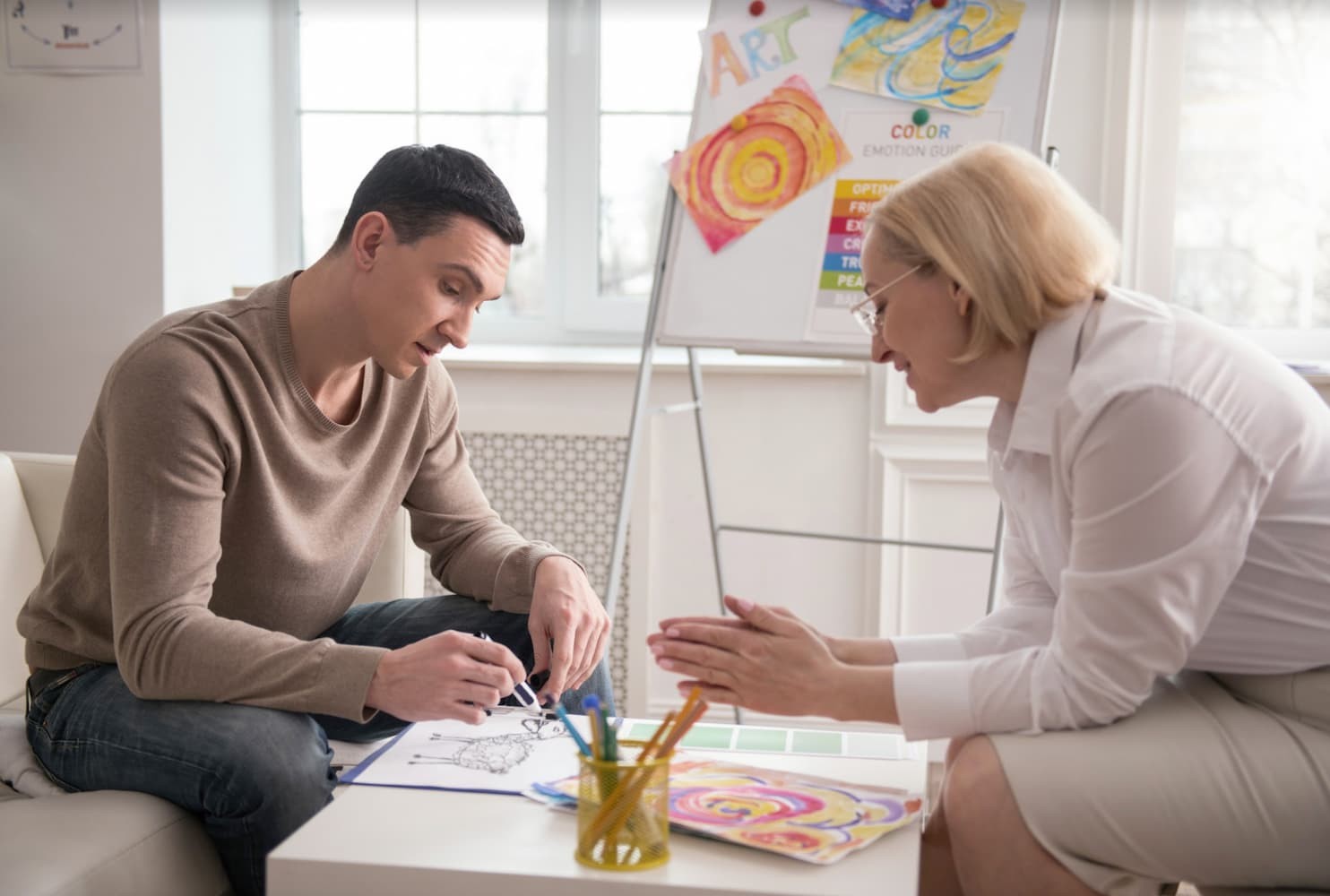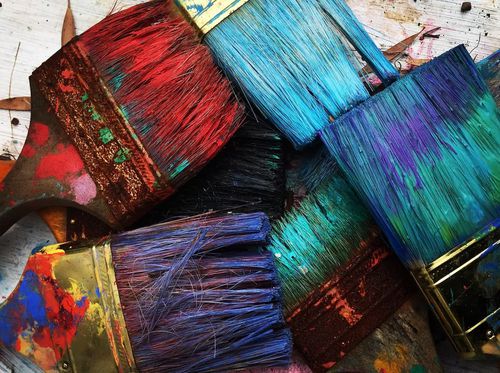What is art therapy?
Art therapy is a process used by art therapists to empower clients and help them gain more control over their mind, body and spirit. Art therapists let their clients choose how they complete their artwork in a way that best expresses and represents their thoughts and feelings. Art therapists who are dealing with the following psychological or mental health problems:
- Fears and phobias
- Post-traumatic stress disorder (PTSD)
- High blood pressure
- Anxiety
- Grief
- Stress
- Muscle tension
- Dementia
- Eating disorders
- Family or relationship problems
- Substance abuse
- Depression
In Brisbane, art therapists have a wide array of professional industry associations to join after they graduate:
- Australian, New Zealand and Asian Creative Arts Therapies Association (ANZACATA)
- Professional Association for Arts Therapy in Australia and New Zealand (ANZATA)
- Australian Register of Counsellors and Psychotherapists (ARCAP)
- Australian Counselling Association (ACA)
- Psychotherapy and Counselling Federation of Australia (PACFA)
- Australian Association of Social Workers (AASW)
- Australian Psychological Society (APS)
- Australian Clinical Psychology Association (ACPA)
- Australian Community Counselling Association (ACCA)
Should you study art therapy?
Are you seeking a career path where you get to help people find meaning in their life experiences and be able to overcome their problems through art? If this sounds like something that you want to explore in your career, pursuing an education in art therapy is perfect for you. For you to succeed as an art therapist, you will need to possess the following interpersonal skills:
- Good working knowledge of art tools and human behaviour.
- Attentive listening skills especially during the sessions with the client. This will help you better analyse the client's sensory, emotional or physical state.
- Caring and empathetic attitude when dealing with clients in order to build trust and show them that their health and welfare is of utmost importance during the sessions.
- Strong communication skills in order to guide clients during the session to use the art for therapeutic purposes.
If you see an alignment between your personal characteristics and career ambitions with the requirements of art therapists, then continue reading to learn more about your course options in Brisbane.
What are the course and study options for art therapists in Brisbane?
Becoming an art therapist is a long-term commitment. In terms of the minimum education requirement, you will need to first complete an undergraduate degree followed by a postgraduate degree. You can pursue a Bachelor's degree in psychology, counselling, social science, nursing or another related field. Afterwards, you must do a Master of Art Therapy. In Brisbane, there are many different course providers that offer flexible delivery modes and learning options to accommodate your needs. This includes on-campus, online or through a blended delivery system.
These courses are taught by professional instructors who have an in-depth understanding of the theory, history and techniques of art therapy and other related fields. This will equip you with the necessary knowledge to assist clients going through mental health, psychological problems or emotional distress. You will also need to do 750 hours of work experience in a supervised clinical placement as a part of your postgraduate degree requirements.
On this page, you can find a list of relevant courses that will help you kickstart your professional career as an art therapist in Brisbane. Once you shortlist your preferred courses and schools, you can get in touch with the course provider directly in order to learn more about their study streams, curriculum and course cost.
What happens after you complete your art therapy course?
Upon finishing your education, you will need to register with the Australian, New Zealand and Asian Creative Arts Therapies Association (ANZACATA). You will also need to fulfil the yearly training requirements of the Continuing Professional Education in order to maintain your credentials. This will allow you to begin your journey in the professional field of art therapy. Some of the different workplace settings that are constantly looking for art therapists to join include:
- Aged care facilities
- Crisis centres
- Schools
- Mental health agencies
- Psychiatric wards
- Assisted living facilities
- Domestic violence shelters
- Clinical research facilities
Additionally, you can also set up your own private practice specialising in art therapy. This is a rewarding career path that gives you the chance to retain a greater degree of control over your business management. If you want to have your own business and see it grow, Natural Therapy Pages can assist you with this process. By listing your face-to-face art therapy services or online sessions via the practitioner listing page, you will be able to drive traffic and gain more clients.








